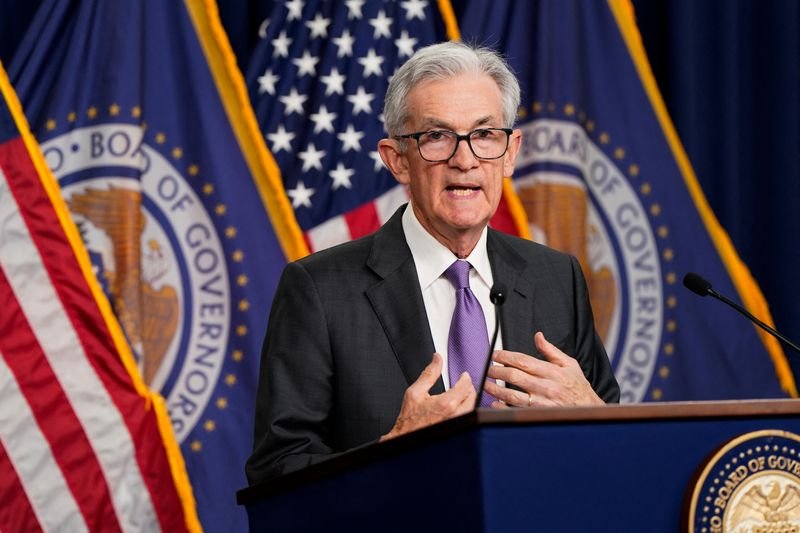
By Michael S. Derby
(Reuters) -U.S. Federal Reserve Chair Jerome Powell said on Wednesday the day is swiftly approaching when the central bank will slow the pace of its balance sheet run-off, and in moving toward a taper of the drawdown, it may allow the central bank to ultimately shed more bonds than it once expected.
“It will be appropriate to slow the pace of run-off fairly soon,” Powell said at a press conference following a Federal Open Market Committee meeting. But he did not offer a specific time frame for the decision, saying only that officials are now debating the issue.
Powell was addressing the central bank’s ongoing efforts to reduce the size of its holdings, commonly referred to as quantitative tightening, or QT.
Officials aggressively increased the central bank’s balance sheet as part of the response to the coronavirus pandemic. Starting in the spring of 2020, the Fed bought Treasury and mortgage bonds in great numbers, first to stabilize financial markets and then to provide stimulus when the Fed’s interest rate target was at near zero levels and could be cut no further.
That quantitative easing, or QE, caused Fed holdings to more than double, topping out at $9 trillion by the summer of 2022. The Fed began to shrink the size of its holdings later that year, having embarked in March 2022 on what would be a robust campaign of interest rate increases aimed at bringing high levels of inflation back to its 2% target.
Since the fall of 2022 the Fed has been allowing up to $60 billion per month in Treasuries and $35 billion per month in mortgage bonds to expire and not be replaced. That’s shaved $1.4 trillion off Fed holdings.
The Fed is seeking to reduce the size of its holdings in a way that will ensure the financial system has enough liquidity for the Fed to retain firm control over the federal funds rate, its chief tool to influence the economy’s momentum, and to allow for normal levels of volatility in money market rates.
To achieve that, Fed officials have been signaling for some time that they would first lay out a plan to slow, or taper, the pace of QT given uncertainty over how far they’ll need to shrink their overall holdings.
Officials are mindful of the events of September 2019, when a QT effort then in play unexpectedly drew too much liquidity out of the financial system, causing significant interest rate churn, requiring the Fed to add liquidity back by once again expanding its balance sheet.
Thomas Simons, economist at investment bank Jefferies, told clients in a note that Powell’s comments may have moved forward the start of the tapering process. “We had been thinking that the tapering of QT would begin in June or July, but this guidance suggests that perhaps the announcement could come sooner, possibly the next meeting on May 1,” he wrote.
In his press conference, Powell said slowing the drawdown from its current pace may allow the central bank to compress the size of its holdings by a greater degree. “We may actually be able to get to a lower level because we would avoid the kind of frictions” that might happen by shedding bonds too quickly, he said.
Powell noted the endgame for Fed holdings envisions a level of banking sector liquidity that’s large enough to navigate normal volatility and periods of stress. But he cautioned there’s no easy rule-of-thumb to look to for stopping QT, saying “there’s not a dollar amount or percent of GDP or anything like that” to look to.
Ahead of the FOMC meeting, a bare majority of economists in a Reuters poll had been expecting the QT taper process to begin in June. Some had been expecting a taper to start before June but reduced odds of a near-term rate cut coupled with Fed officials’ view that the financial system still has plenty of liquidity have suggested the possibility of a later start to the process.
(Reporting by Michael S. Derby; Editing by Andrea Ricci)
Source link







